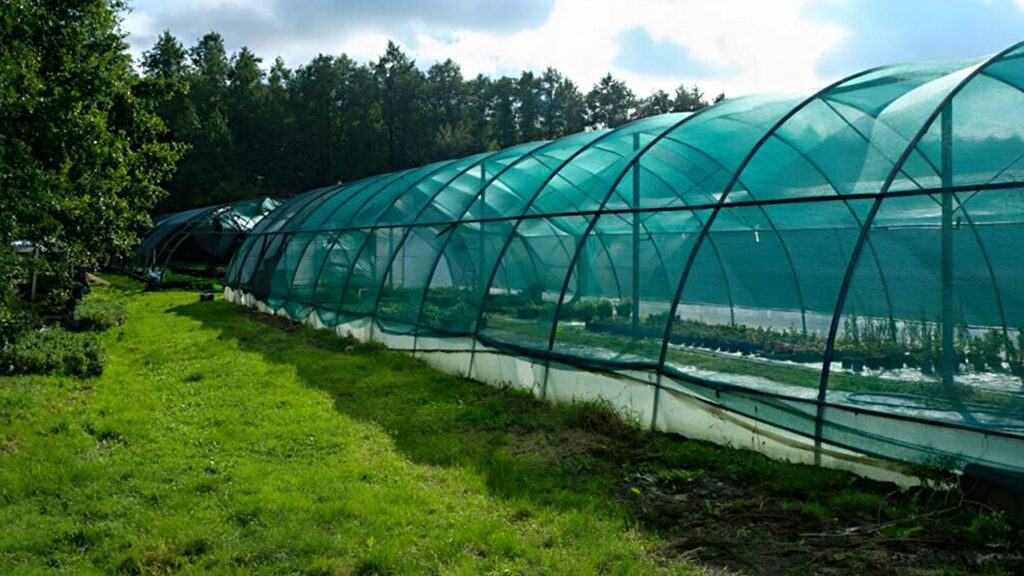The summer sun can be a harsh mistress for your beloved plants. Scorching temperatures and intense sunlight can lead to wilting, stunted growth, and even death. But fear not, green thumb! Shade netting emerges as a hero in this story, offering a cool sanctuary for your plants to thrive. This blog delves into the world of shade netting, answering all your burning questions (pun intended!)
What is Shade Netting?
Imagine a giant, breathable net you drape over your plants. That’s essentially shade netting. It’s a lightweight fabric, typically made of high-density polyethylene (HDPE), that allows some sunlight to filter through while blocking a percentage of the sun’s rays. This creates a cooler, more controlled environment for your plants.
What is Shade Net Made Of?
As mentioned before, HDPE is the champion material for shade netting. It’s known for its durability, resistance to UV rays, and breathability. Some nets might be woven from knitted materials or even shade sails, but HDPE reigns supreme for its practicality and affordability.
What Do You Use Shade Netting For?
Think beyond just protecting plants! Shade netting has a wide range of uses:
- Gardens: Regulating sunlight for delicate plants, creating seedling nurseries, or extending the season for heat-sensitive crops.
- Patios and Decks: Providing shade for outdoor living spaces, making them more comfortable during the summer months.
- Temporary Shelters: Creating shade for events, construction sites, or even carports.
- Wind Protection: Acting as a wind barrier for young plants or protecting delicate fruits from wind damage.
How Wide is Shade Netting?
Shade netting comes in a variety of widths, typically ranging from a few feet to tens of meters. The ideal width depends on your application. For gardens, smaller widths might suffice, while larger areas may require wider nets.
Does Shade Netting Reduce Temperature?
Absolutely! By blocking a portion of the sun’s rays, shade netting creates a cooler microclimate beneath it. The exact temperature reduction depends on the shade percentage of the net. Higher percentages will provide a more significant cooling effect.
Does Mesh Provide Shade?
Yes, mesh can provide shade, but its effectiveness depends on the density of the weave. A tightly woven mesh will offer more shade than a loose one. Shade netting, however, is specifically designed for sun protection and offers a more consistent level of shade compared to a generic mesh.
Let’s Get Specific: Choosing the Right Shade Netting
For Plants:
The best shade netting for plants depends on their sunlight needs. Here’s a general guide:
- Seedlings and delicate plants: 70-90% shade
- Vegetables and flowers: 30-50% shade
- Fruits: Varying percentages depending on the specific fruit (research individual needs)
Can You See Through Shade Cloth?
Not entirely. The higher the shade percentage, the less visible light becomes. However, some see-through ability remains with most shade cloths.
How Long Does Shade Netting Last?
High-quality HDPE shade netting can last for several years, especially with proper care like storing it during harsh weather conditions.
Understanding Shade Cloth
Shade cloth and shade netting are often used interchangeably. Both offer sun protection, but shade cloth might be a more generic term encompassing various shade-providing fabrics, while shade netting is specifically designed for agricultural and outdoor applications.
Do Plants Grow Better Under Shade Cloth?
For many plants, especially those that struggle under intense sunlight, shade cloth can be a lifesaver. It promotes healthier growth by regulating temperature, reducing water evaporation, and protecting them from sunburn.
How to Protect Plants from Shade?
Ironically, too much shade can also harm plants. Monitor your plants and adjust the shade netting or move them to receive some direct sunlight if necessary.
Choosing the Best Shade Cloth
The best shade cloth depends on your specific needs. Consider factors like:
- Shade percentage: How much sun do you want to block?
- Durability: Will it need to withstand strong winds or harsh weather?
- Cost: Prices vary depending on quality and features.
- Color: While green is common, consider the aesthetics of your space.
What Colour Shade Cloth is Best?
Green is the most popular color for shade netting as it blends well with the natural environment. However, black nets might offer slightly higher UV protection, and other colors are available for aesthetic purposes.

